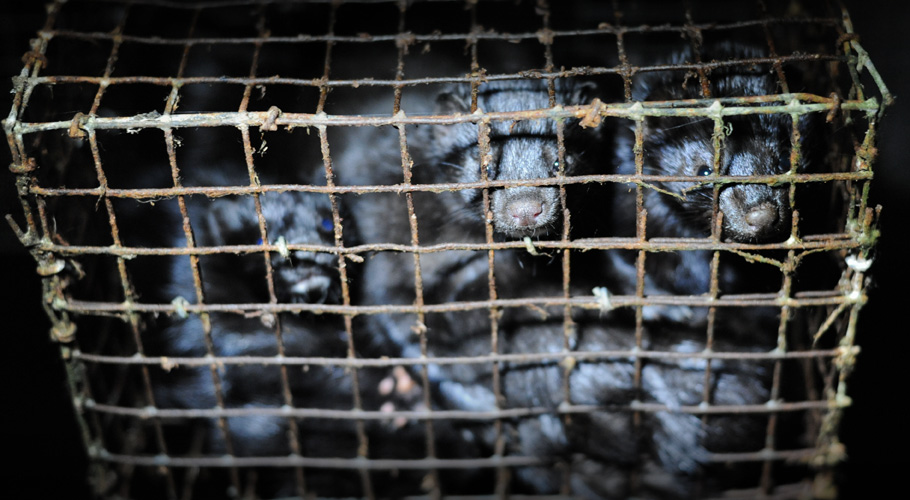
1. Fur Farming is largely unregulated. Outside of the very basic requirements for operating an agricultural business, there’s almost no oversight or rules. The fur industry has created a set of voluntary codes of practice that farm owners can follow if they choose, but there are no repercussions if they don’t. The only province that has instituted these codes as actual regulations is New Brunswick, and fur associations in all other regions have opposed such action vigorously. When fur farms are found in violation of provincial law in British Columbia, they are given a $50 fine if they don’t come into compliance (after a warning).
2. The killing is anything but humane. Not only do mink and fox live in tiny, wire-bottomed cages for their short lives after birth on a fur farm, they’re killed by gassing (mink) and anal electrocution (fox). These are the recommended best practices.
3. Environmental complaints are piling up. Massive algae blooms on sensitive waters surrounding fur farms in Nova Scotia have forced day camps to close and rendered once-beautiful cottages worthless. Waste and carcasses attract predators to rural properties (and are then shot). And the incredible volume of feces and urine produced by each mink or fox often seeps into the ground.
4. Farms can’t afford to stay open. Despite claims that the fur industry is an important economic powerhouse in Canada, some of the largest operations have shuttered their doors for good in the once-booming western Nova Scotia region, sending hundreds of part-time, seasonal workers, scrambling to find secondary employment. This comes on the heels of farm loan extensions and a massive $20,000,000 bailout in 2014.
Don’t believe everything you read from those who stand to profit from the suffering of animals. The fur industry is about money – and nothing else. It’s time to #MakeFurHistory.
monthly donor(for as little as $5/month – the cost of a single latte) pleaseclick hereand help us save lives today.

